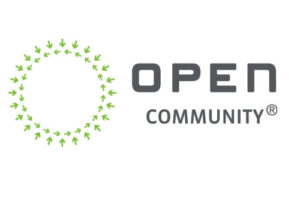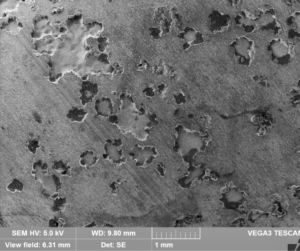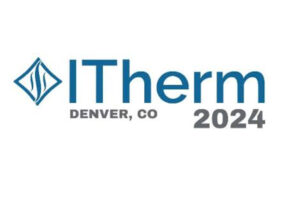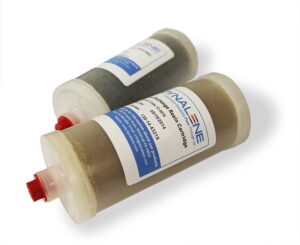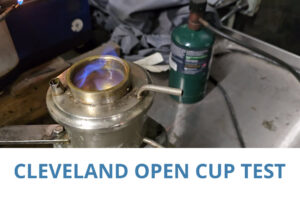Dynalene
Abstract
Vanadium (V) and nickel (Ni) are industrial toxic waste which endangers the productivity and life of plants, crops, and the whole agricultural system. In this case study, V and Ni removal from the water (V concentration=4.5 mg/L and Ni concentration=0.85 mg/L) which is obtained from an industrial wastewater treatment facility is discussed. The main goal of this study was to develop a method for efficient removal of V and Ni from industrial wastewater simultaneously. The lowest achieved V and Ni concentrations using the contamination removal process were 0.024 and 0.033 mg/L, respectively.
1. Introduction
Allowable concentration limits of heavy metals in industrial wastewater are very low due to its impact on the ecosystem. The regulations have become stringent due to the rapid growth in the industries resulting in a massive amount of wastewater [1]. Vanadium (V) and nickel (Ni) are natural elements and their concentrations in the soil are 10 to 220 and 10 to 1000 mg/kg, respectively [2]. The V and Ni concentration in the effluents is required to be less than 0.0662 and 0.4 mg/L, respectively.
The main goal of this study is to develop a process to treat the wastewater that contains 4.5 mg/L of Vanadium and 0.85 mg/L of Nickel and bring the contaminant level to below the acceptable level (0.0662 and 0.4 mg/L for V and Ni, respectively).
1. Background and Experiment
· Sample: Industrial wastewater from wastewater treatment plant
· Problem: Inability to dispose the wastewater to the drain due to high Vanadium and Nickel concentration
· Initial concentration: Vanadium concentration=4.5 mg/L and Nickel concentration=0.85 mg/L
· Adsorbent / Media: Ion exchange resin (VD-25XT, Dynalene Inc. Product) and activated carbon (AC-NV-01, Dynalene Inc. Product)
· Filtration: 5 micron filter
3. Results and Challenges
The lowest achieved Vanadium and Nickel concentrations using the contamination removal process were 0.024 and 0.033 mg/L, respectively. Particulate filtration is required to remove undissolved metal and non-metal contaminants.
Lowering concentrations of the contaminants to below the acceptable levels may require treatment at lower flow rates compared to the usual ion exchange and activated carbon treatment practices. Throughput of the contamination removal process can be increased by increasing the size of the media tanks. Figure 1 shows the (a) untreated and (b) treated wastewater samples.


Figure 1. Wastewater sample: a) untreated b) treated
4. Conclusion
Ion exchange resin VD-25XT and activated carbon AC-NV-01 can be used to lower the contaminant concentration of Vanadium and Nickel to 0.024 and 0.033 mg/L, respectively. Particulate filtration may be required to remove the undissolved metal and non metal contaminants. The size of the contamination removal system can be custom designed to meet customer requirements.
5. References
[1] A.H. Elshazly, A.H. Konsowa, Removal of nickel ions from wastewater using a cation-exchange resin in a batch-stirred tank reactor, Desalination. 158 (2003) 189–193.
[2] G. Arena, C. Copat, A. Dimartino, A. Grasso, R. Fallico, S. Sciacca, M. Fiore, M. Ferrante, Determination of total vanadium and vanadium(V) in groundwater from Mt. Etna and estimate of daily intake of vanadium(V) through drinking water, J. Water Health. 13 (2015) 522–530.

